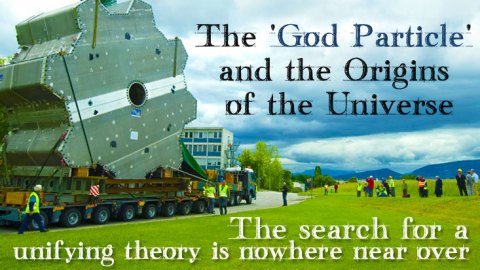Rebuttal to John Horgan’s Response to my Recent WSJ Opinion Editorial — The ‘God Particle’ and the Origins of the Universe

Last week, The Wall Street Journal published my opinion editorial, “The ‘God Particle’ and the Origins of the Universe – The search for a unifying theory is nowhere near over.” Subscribers to the online edition of the Wall Street Journal are able to read the original editorial by visiting http://on.wsj.com/sO8uwe.
In response to my WSJ op-ed, John Horgan (Science journalist and Director of the Center for Science Writings at Stevens Institute of Technology) posted an article on his Scientific American blog — Cross-Check.
My rebuttal to John Horgan’s Cross-Check blog entry on Scientific American is as follows:
John Horgan, in his essay, does what he does best, acting as an agent provocateur, throwing flames in all directions, and hoping that some of them may start a fire. In the process, he raises both real and thoughtful scientific questions.
First, he says that the Higgs boson has been over hyped. This is true, but this is not the fault of physicists. We send out press releases, praying that some of them might make it into the papers, only to find that 99.9% of them are totally ignored. And when the media picks up something, it is because of some quirky angle (e.g. calling the Higgs boson the “God particle,” a rash decision made by a book editor). So, blame the rating-obsessed media, not physicists, for this distorted picture of how science is done. (Given the almost to total lack of science coverage in the national media, it’s no wonder that young people, who are our future, are ignoring science. So I believe that even distorted publicity concerning science is better than none.)
Second, he says that an accelerator the size of the Milky Way galaxy is needed to verify exotic theories like string theory – This is not true. Almost all advanced science is done indirectly, not directly. We know that the sun is made mainly of hydrogen, not because we have visited the sun or scooped up some sun material, but because we have analyzed sunlight using prisms from a distance. Similarly, we look for indirect clues to test theories beyond the Standard Model, such as finding evidence of “sparticles” (higher vibrations of the string) which may explain the presence of dark matter, or creating gravity-wave detectors in deep space which may detect evidence of radiation from before the Big Bang, or finding experimental deviations from Newton’s inverse square law which may prove the existence of parallel universes.
Third, he says that perhaps nature does not believe in unification. This might be true, but is highly unlikely. For example, it is astounding that all known physical laws, from expanding universes to colliding sub-atomic particles, can be summarized on a single sheet of paper, containing the mathematical equations of general relativity and the Standard Model.
In fact, the sum total of all physical knowledge obtained in the last 2,000 years can be described in the language of unification. This is powerful testament to the power of unification. It would seem bizarre if nature did not take the last step, and unite these two sets of equations. Ultimately, there is no way of definitely knowing if nature prefers a final unification of all physical laws.
However, as Eisenhower once said — “Pessimism Never Won a War.” Optimists (not flame throwers) ultimately are the makers of history.
— Additional Links & Resources:
Visit The University of Edinburgh School of Physics and Astronomy website to learn more about Peter Higgs and the Higgs Mechanism
The above page also includes links to external resources that may be of interest:





